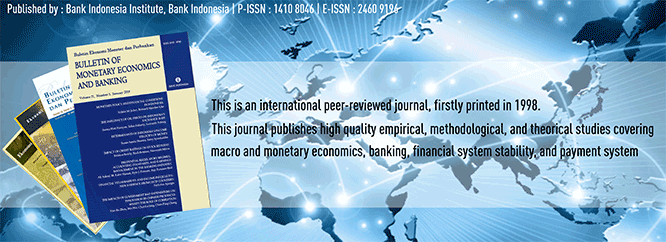
Document Type
Article
Abstract
The objective of this study is to determine the implications for the effectiveness of monetary policy transmission by examining the impact of specific policy toolkits in both Advanced Economy (AE) and Emerging Market (EM) countries during crises and during normalization (exit policy) upon crisis resolution. The analysis conducted using the VECM method on a number of AE and EM countries demonstrates that the response of bank interest rates (credit) is consistent with changes in policy rates and substantially diverges from Quantitative Easing (QE) policy in both the short and long term. However, the efficacy of monetary policy transmission appears to be diminishing following multiple crisis periods, including the Global Financial Crisis (GFC) and the COVID-19 pandemic. Furthermore, the efficacy of monetary policy transmission is higher in countries that first normalize liquidity than in those that directly increase policy rates, particularly in the aftermath of the COVID-19 pandemic.
Recommended Citation
Lubis, Alexander; Pratama, Rangga; Yunaniar, Merlin Dwi; Nugroho, Wahyu Agung; and Susiandri, Dian Prima
(2025)
"Exit Policy, Liquidity Normalization, and lts Implications on Central Bank Policy Transmission,"
Bulletin of Monetary Economics and Banking: Vol. 28:
No.
1, Article 5.
DOI: https://doi.org/10.59091/2460-9196.2360
Available at:
https://bulletin.bmeb-bi.org/bmeb/vol28/iss1/5
First Page
85
Last Page
116
Creative Commons License

This work is licensed under a Creative Commons Attribution-NonCommercial 4.0 International License
Country
Indonesia
Affiliation
Bank Indonesia







